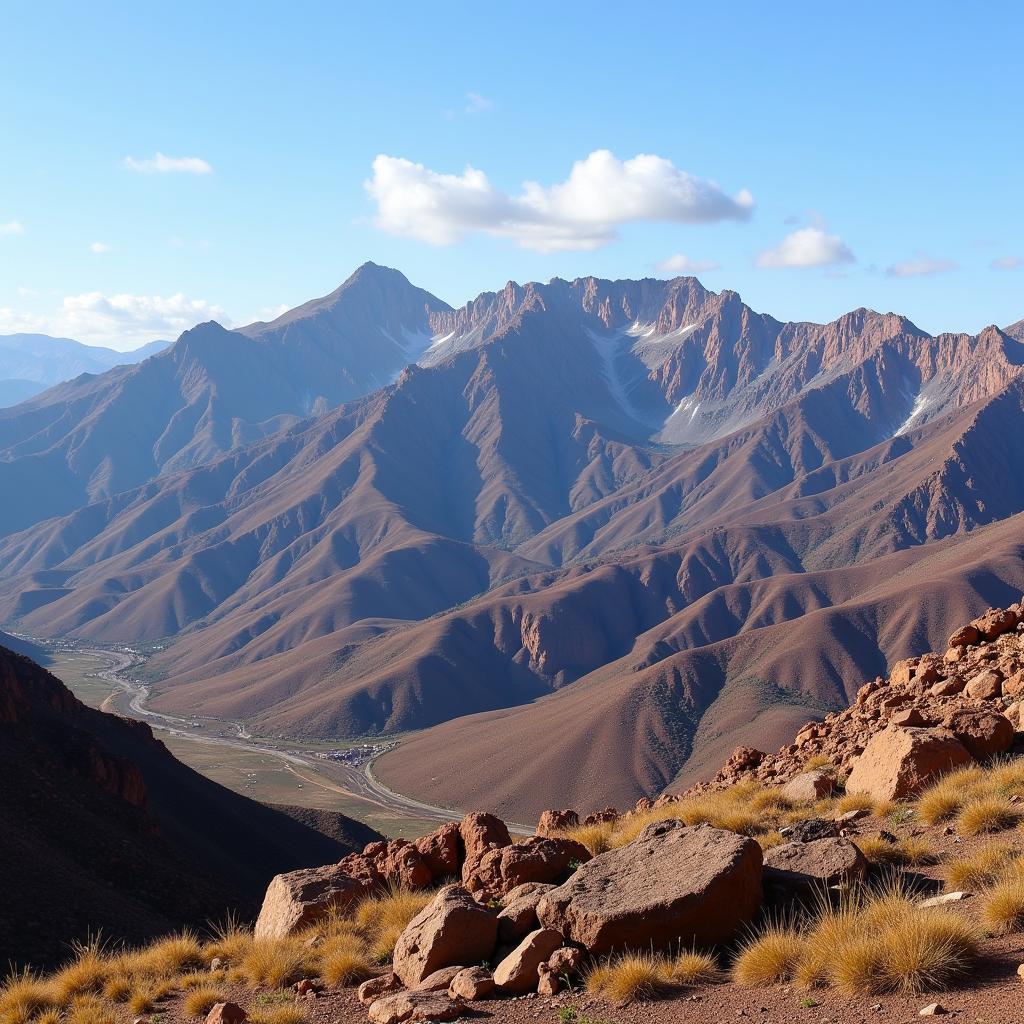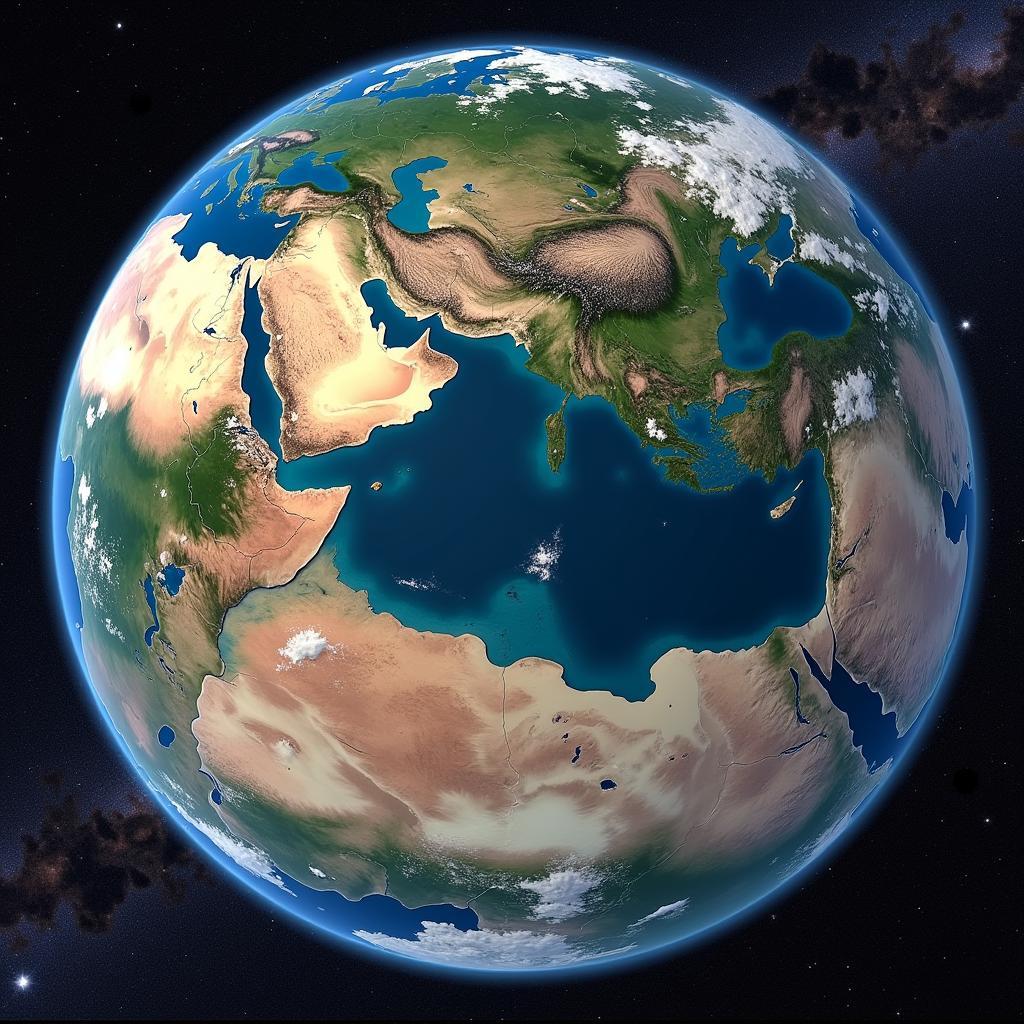The African and Eurasian Plate Boundary: A Meeting of Continents
The African And Eurasian Plate Boundary is a fascinating area where two of Earth’s major tectonic plates collide, shaping the landscape and influencing geological activity across a vast region. This dynamic boundary extends for thousands of kilometers, influencing everything from the formation of mountain ranges to the occurrence of earthquakes and volcanoes.
Understanding Plate Tectonics and Convergent Boundaries
Before diving into the specifics of the African and Eurasian plate boundary, it’s crucial to understand the fundamentals of plate tectonics. The Earth’s lithosphere, the rigid outermost shell, is broken into several large and small plates that are in constant motion, albeit extremely slow. These plates interact with each other in various ways, leading to the creation and destruction of landforms, volcanic activity, and seismic events.
A convergent boundary, as the name suggests, is where two plates move towards each other. The nature of the interaction, however, depends on the type of plates involved. The African and Eurasian plate boundary presents a complex scenario of continental-continental collision.
The Collision Zone: Mountains, Earthquakes, and Volcanoes
The African and Eurasian plates primarily exhibit a convergent boundary where the denser oceanic portion of the African plate subducts beneath the Eurasian plate. However, in certain regions, a continental-continental collision takes place. This collision is a slow, powerful process that has been ongoing for millions of years.
The Rise of Mountain Ranges
The most dramatic consequence of this continental collision is the formation of imposing mountain ranges. The immense pressure generated when the two continental plates meet, coupled with the uplift and folding of the Earth’s crust, has led to the creation of some of the world’s most iconic mountain ranges. The Atlas Mountains in North Africa, stretching across Morocco, Algeria, and Tunisia, stand as a testament to the immense power of this tectonic collision.
 The Atlas Mountains in Morocco
The Atlas Mountains in Morocco
Further east, the collision zone continues to shape the landscape, giving rise to the Pyrenees mountains, dividing Spain and France, and the Apennines, which form the backbone of the Italian peninsula. These mountain ranges are not static geological features. They continue to rise, albeit slowly, as the African plate continues its northward push.
Seismic Activity and Volcanic Whispers
The African and Eurasian plate boundary is a seismically active zone. The constant pushing and grinding of the two plates create immense stress along the fault lines, and when this stress is released, it results in earthquakes. While the convergence rate is slow, the earthquakes along this boundary can be significant, impacting populated areas across the Mediterranean region.
Although less common than earthquakes, volcanic activity is another feature of this dynamic boundary. While the collision zone doesn’t host a chain of towering volcanoes like those found at subduction zones, there are instances of volcanism. Mount Etna, on the island of Sicily, is a prime example. This active volcano owes its existence to the complex interplay of tectonic forces along the African and Eurasian plate boundary.
The Future of a Collision: An Ongoing Saga
The story of the African and Eurasian plate boundary is far from over. The ongoing collision continues to reshape the landscape, albeit slowly. The Mediterranean Sea, sandwiched between the two continents, is actually shrinking as a result of this collision.
 Satellite View of the Mediterranean Sea
Satellite View of the Mediterranean Sea
Scientists predict that millions of years from now, the continued northward movement of the African plate could eventually lead to the closure of the Mediterranean Sea, giving rise to a new mountain range that might rival the Himalayas in scale. The African and Eurasian plate boundary serves as a powerful reminder of the Earth’s dynamism, a place where continents collide, mountains rise, and the very face of our planet is constantly being reshaped.